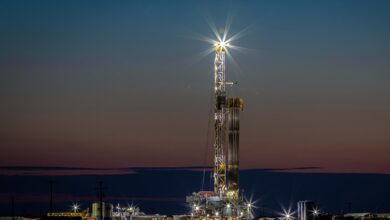Wood Mackenzie: Operators taking a deliberate approach to offshore exploration and development
By Kelli Ainsworth, Associate Editor

If the number of final investment decisions (FIDs) taken by operators is an indication of the health of the offshore market, then things are looking up. Wood Mackenzie anticipates that roughly 30 offshore projects will receive an FID in the coming year. This is roughly flat from 2017, when 32 projects were sanctioned, and a significant increase from 2016, when fewer than 15 projects received FIDs. The newly sanctioned projects this year are likely to be developed more quickly and at lower costs than pre-downturn projects, Julie Wilson, Research Director, Global Exploration at Wood Mackenzie, said at the 2018 OTC in Houston on 30 April.
“Over the past decade, we’ve seen a lot of projects that have been delayed or run over and really destroyed value,” she said. “This is something that companies are very much trying to avoid doing again. Simpler, faster and improved delivery is something that operators are very focused on.”
Among the FIDs that Wood Mackenzie is forecasting for 2018 are Eni’s Argo cluster in the Adriatic Sea, ExxonMobil’s Domino and Pelican fields in the Black Sea, and Phase Two of the Libra Field in the Brazilian pre-salt. The Kangaroo and Echidna fields, operated by Karoon Gas, could also potentially see an FID this year. “That one is probably more at risk, given that Karoon Gas is smaller, so there’s possibly a project capital constraint there,” Ms Wilson said.
Going forward, operators will likely take a phased approach to developing new fields, as ExxonMobil has done with its Liza development, she said. This reduces the upfront capital investment required. Additionally, learnings from each phase can be applied to subsequent phases. “They can learn about reservoir permeability and how the wells will produce,” Ms Wilson said. “That’s going to help them plan for later phases.”
New deepwater developments – those that are sanctioned this year and beyond – will largely have lower breakeven prices than they would have four years ago. Many developments that would have had an $80/bbl breakeven have been redesigned and simplified. When they’re eventually sanctioned, they can be developed at a much lower cost, she said. Already, more than 12 billion bbls of oil in deepwater and ultra-deepwater are economic at $60. For some pre-FID projects in countries where the fiscal terms are more burdensome, breakevens can still be relatively higher, at up to $80/bbl, Ms Wilson said. “We don’t expect some of these to move forward in the very near term because operators are expecting some fiscal changes in those countries,” she added.
On the exploration side, operators are focusing on fewer plays overall. “Those plays are tending to be deepwater sweet spots, so where the reservoir deliverability is the highest and they can get the highest estimated ultimate recovery per well that they’re drilling,” Ms Wilson said. This focus on sweet spots has prompted aggressive bidding for prime acreage offshore Brazil and Mexico, where operators expect to see high production at good breakevens, she added.
Wood Mackenzie believes there are 20 major offshore exploration wells to watch in 2018, including Tullow Oil’s Cormorant-1 offshore Namibia, Total’s Paddavissie-1 offshore South Africa and Repsol’s Bon Bini offshore Aruba. While the industry had been hoping to see drilling in the Foz de Amazonas basin offshore northern Brazil in the near term, environmental permitting issues in the country continue to prolong uncertainty about when that basin might be drilled. The company expects an exploration success rate of 30-40% in the wells it’s watching for 2018, which is in line with typical exploration success rates, she added.




